Look
Exposure
Splint
Sling
From Front
Skin
- scars
Swelling
- SCJ
- clavicle
- ACJ
- biceps (rupture long head)
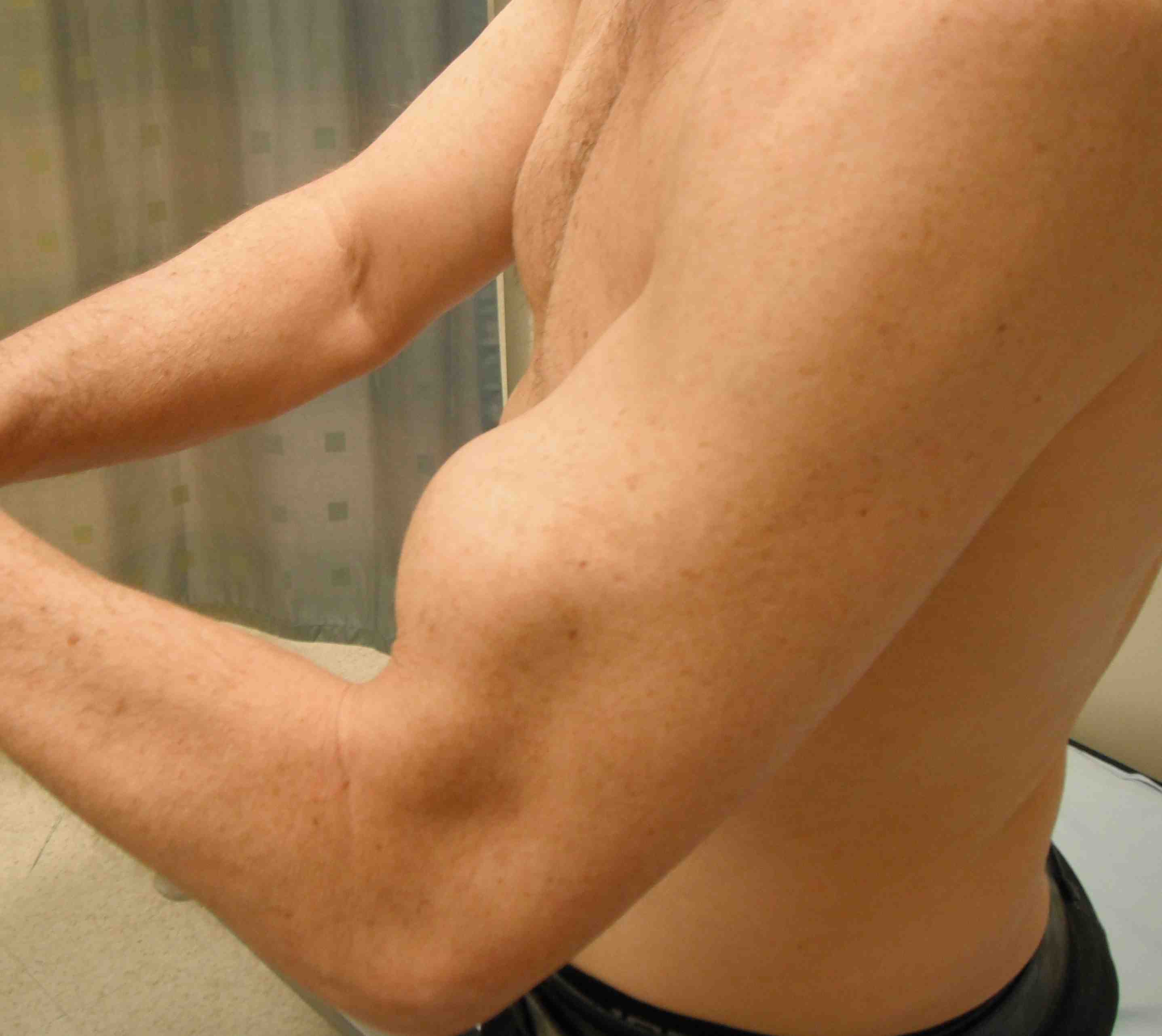
Wasting
- deltoid
- trapezius
- arm
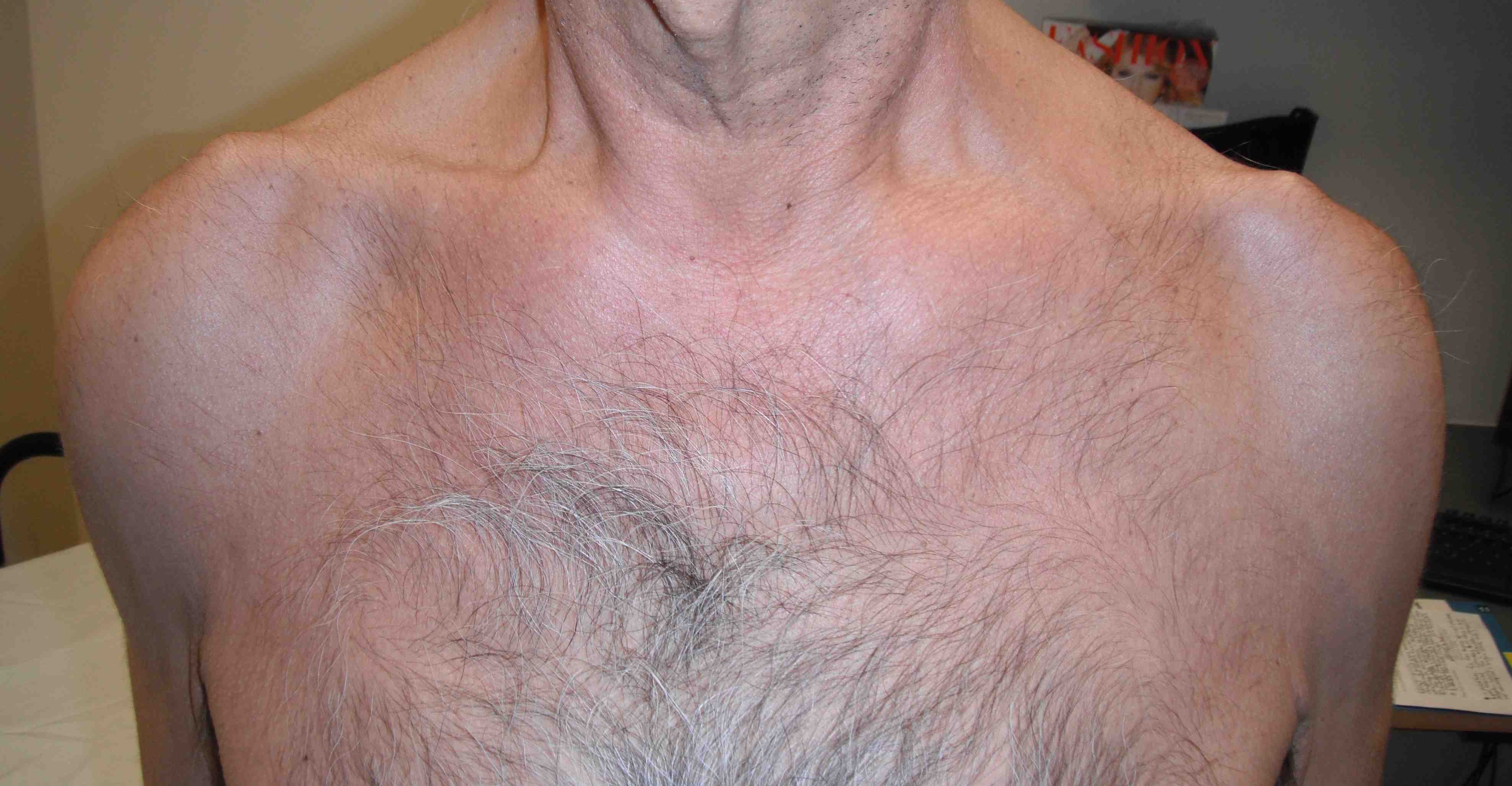
From Side
Turn affected side towards you
Wasting
- pectoral contour
From Back
Scapular symmetry
- height
- winging
Wasting
- supraspinatus
- infraspinatus

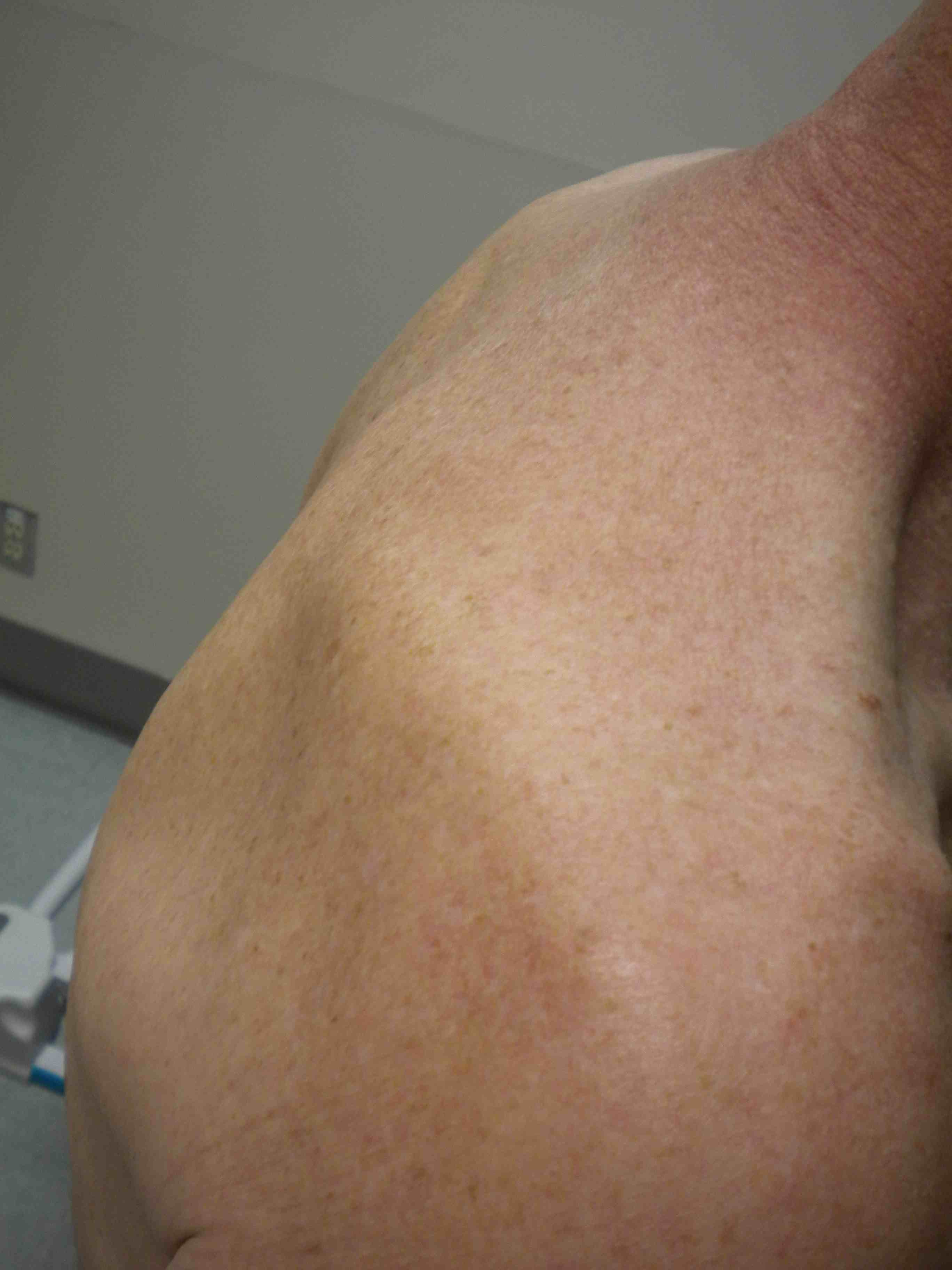
Feel
"Where is it painful ?"
Bony prominences
- SCJ
- clavicle
- ACJ (compare with other side)
- acromium
- biceps tendon
Scapular spine
Supraspinous fossa
- ganglion
- osteochondroma
Infraspinous fossa
- tenderness
- cuff defect
Move
Forward flexion
Active
- both arms raised forward, supinated
- range
- check axilla
Abduction
Active
- elevate both arms in coronal plane, supinated
- initiation
- range (160°-180°)
- rhythm
- arc of pain
- shoulder hiking
Passive
- if not full, passive to 180?
- active v passive
Observe arm lowering
- arc of pain
- drop arm
Extension
Active
- both arms raised backward
External rotation
Active
Elbows flexed to 90o and arms by side
- start with arms forward
- rotate arms outwards (90°)
Passive
If not full, passive
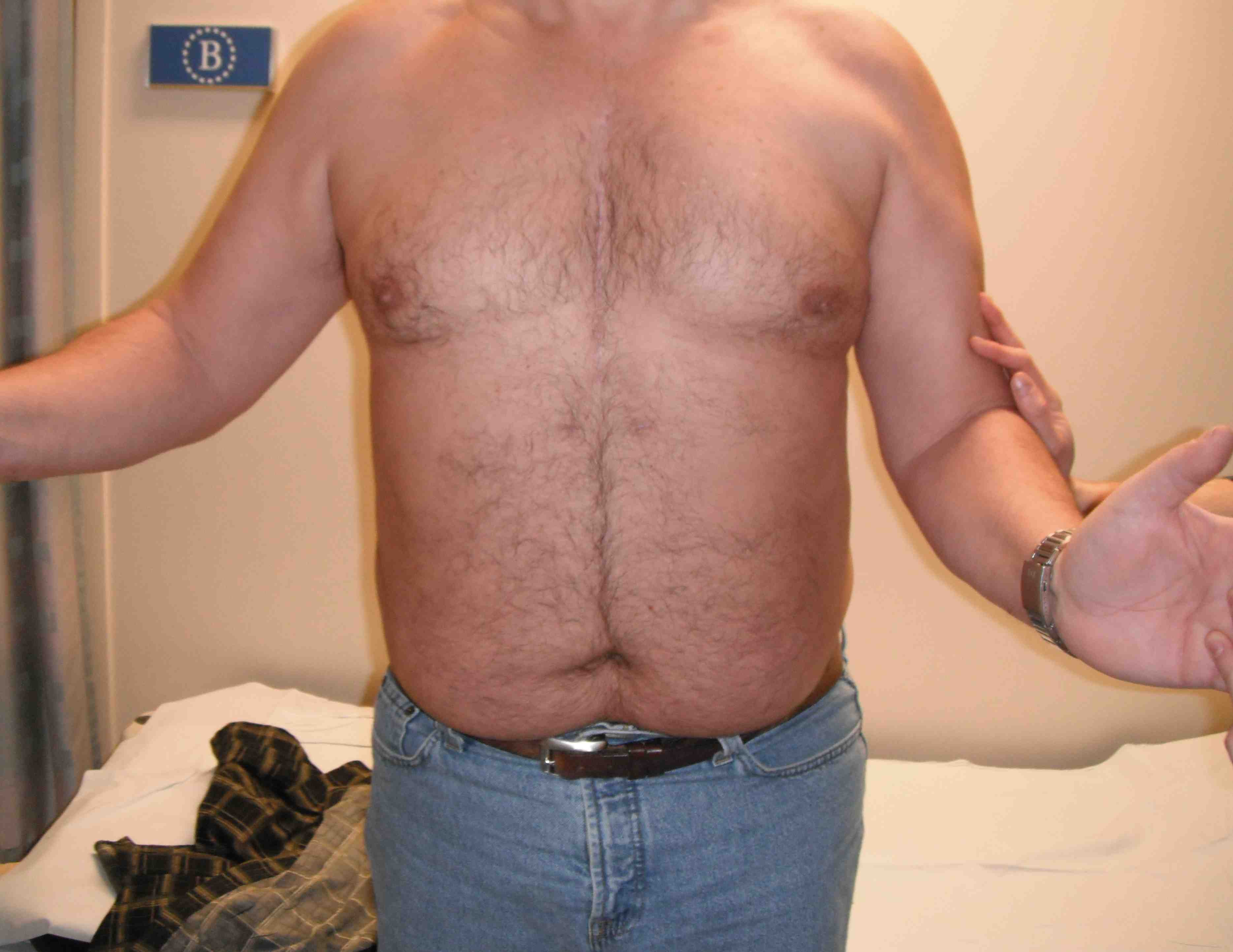
Internal rotation
Active
- ask to run thumb up spine
- mark good and compare bad
- thigh / buttocks / waist / LS / T12 / angle of scapula (T7) / tip of scapula (T2)
Rotator Cuff Power / Integrity
Power of supraspinatous
- 30° abduction
- in plane of scapula (30° forward from coronal plane)
- forearm pronated (thumb to the ground)
- resisted abduction
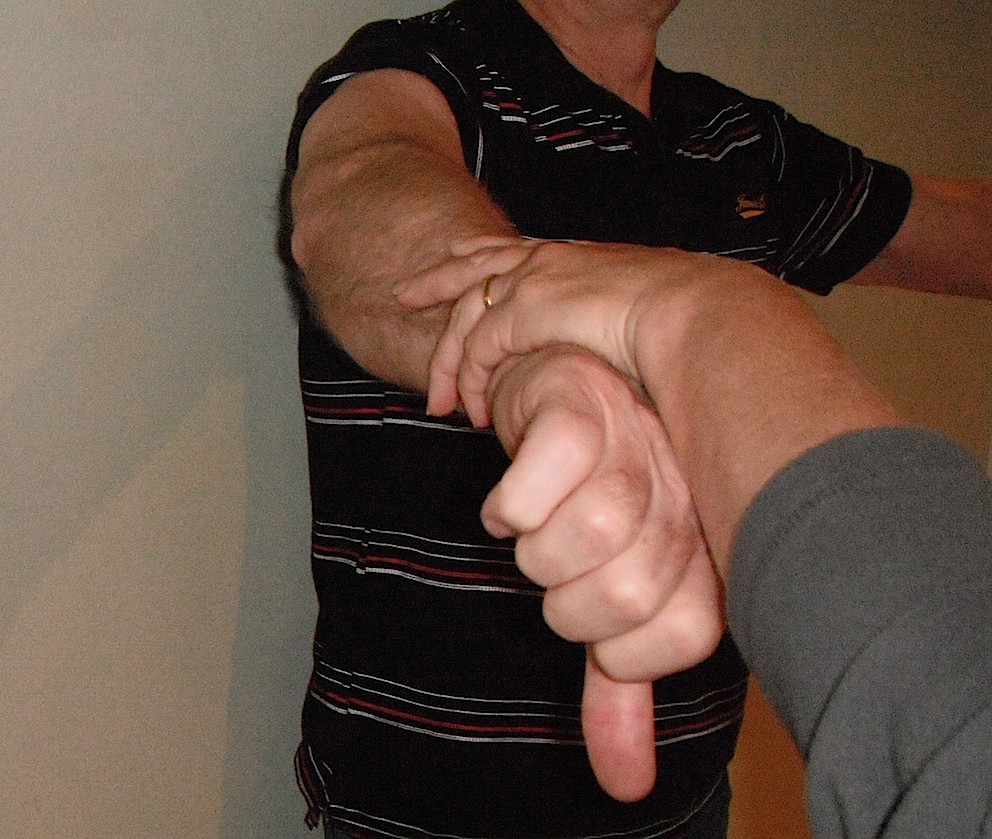
Power of Infraspinatous
1. Grade power external rotation
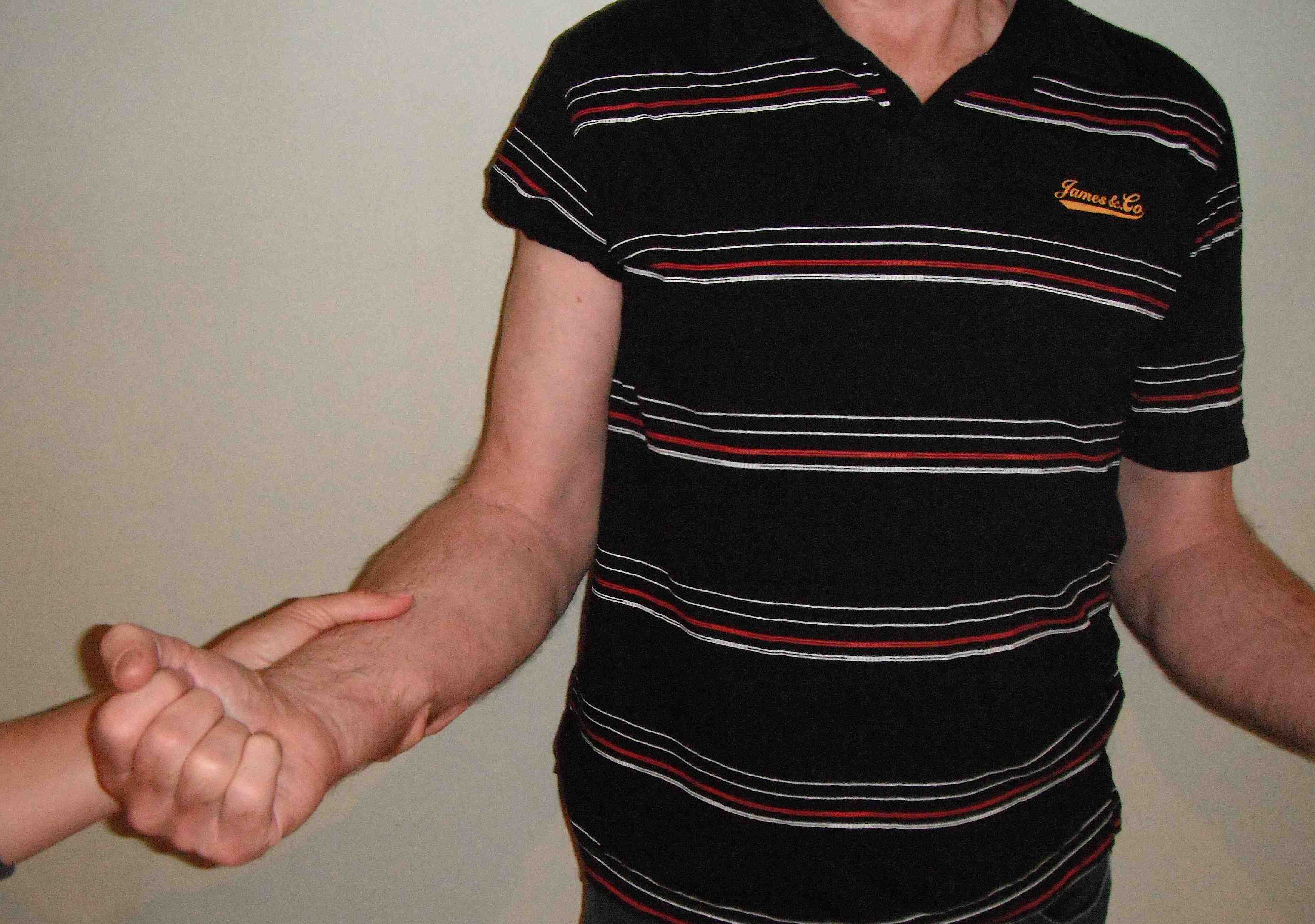
2. Extensor lag
- take out to full passive ER
- release and see if lags
3. Hornblower's
- positive if drop and IR
- suggests massive PS tear
- teres minor
Power of Subscapularis
1. Gerber's Lift off test
- Gerber's test is normal if patient can hold hand off buttock
- patient must have full IR & not be limited by pain to use this test
- "Pathological lift off test - patient is unable to lift the dorsum of his hand off his back"
- put dorsum of patient's hand on buttock then lift it off buttock & let go
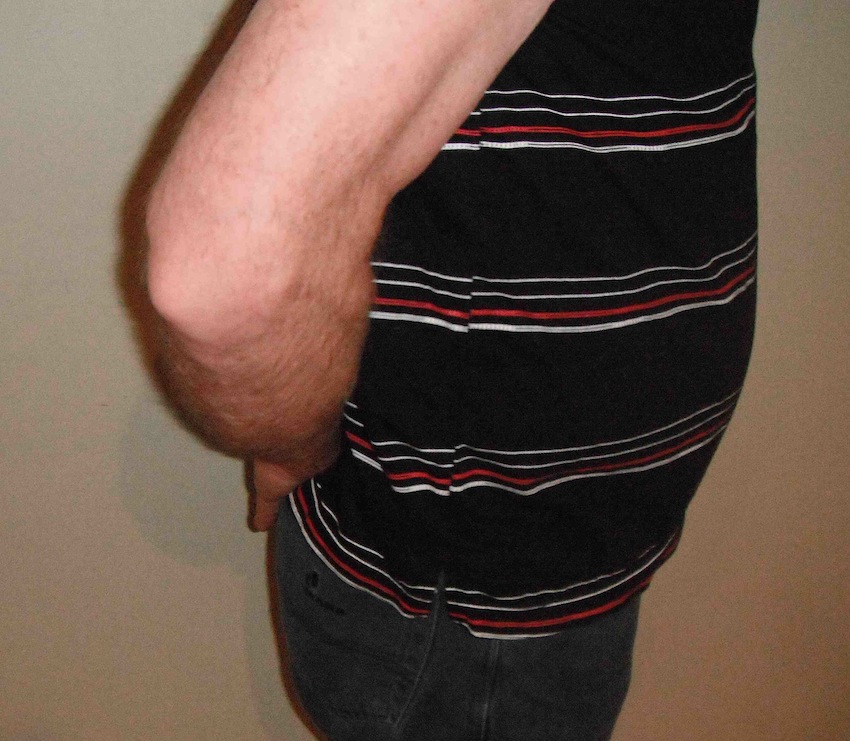
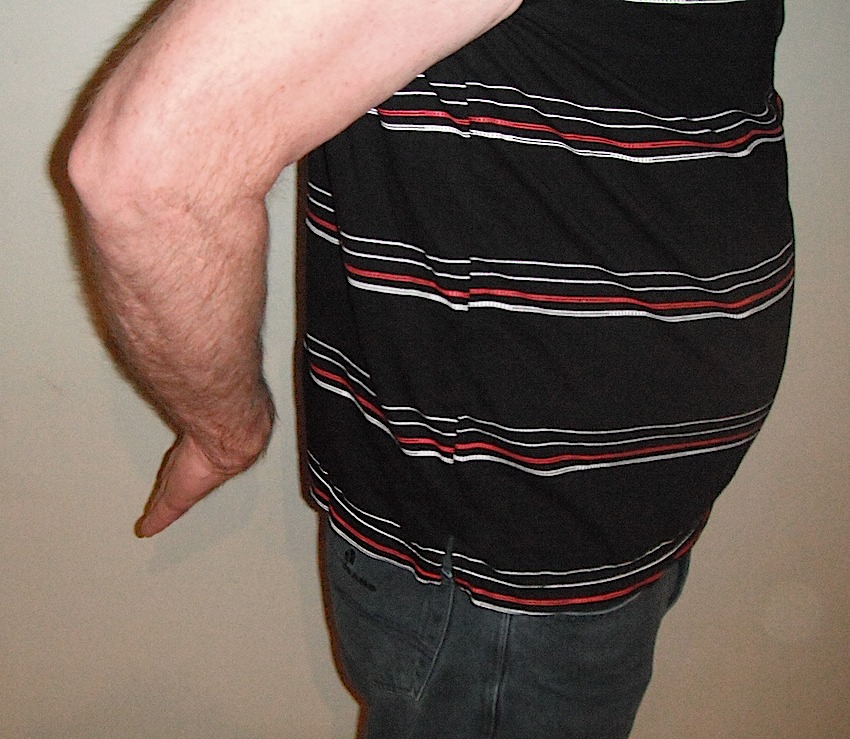
2. Belly Press Test / Nelaton Test
- resisted internal rotation with hand on belly
- must keep elbow forward
- otherwise patient uses shoulder retractors
- positive if drop elbow
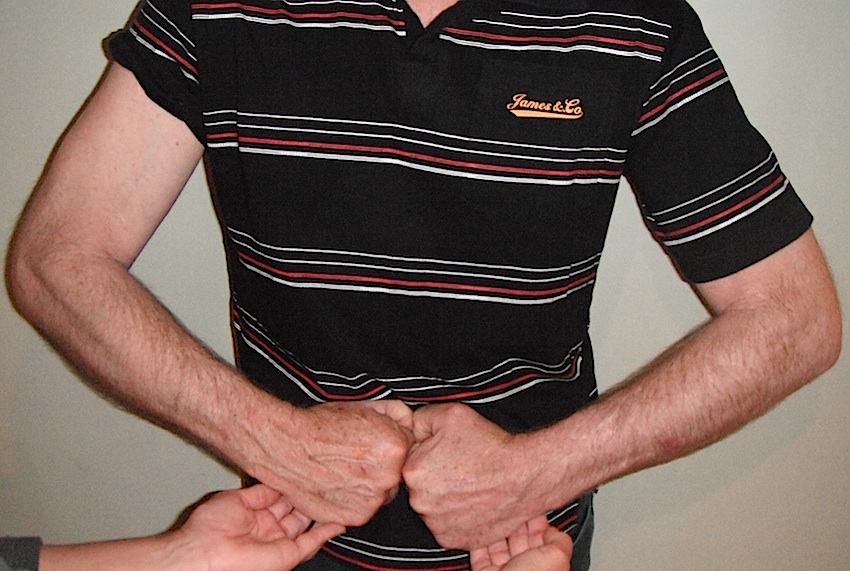
Impingement tests
Neer's impingement test
- passive forward flexion
- forearm pronated
- scapula stabilised
- positive test - pain at arc 70-120°
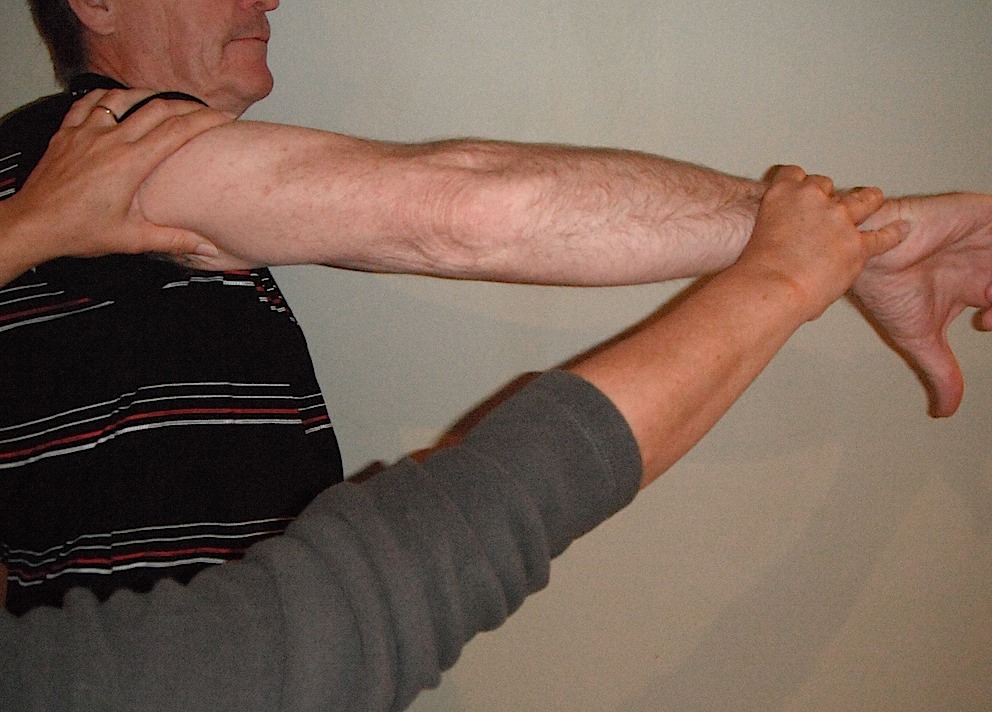
Hawkin's impingement test
- forward flex elbow to 90°
- internally rotate and adduct arm
- positive test - pain
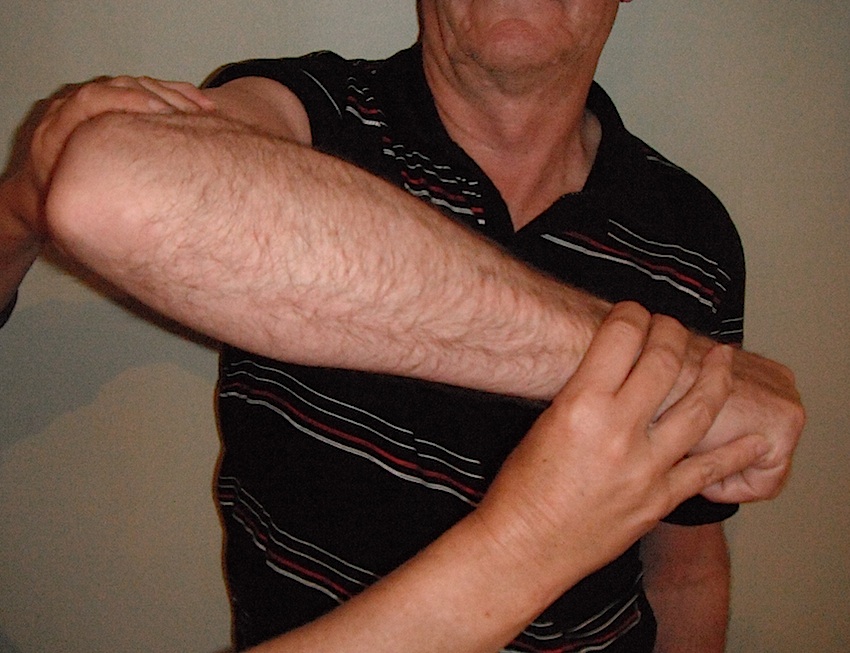
ACJ
Cross body adduction
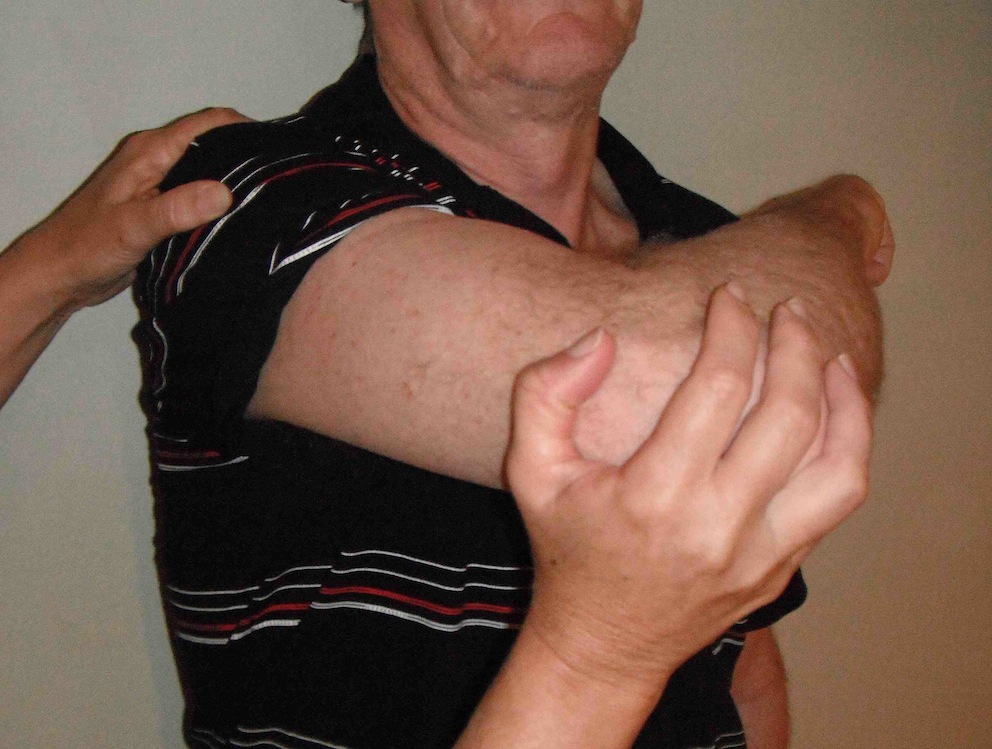
Biceps
Speed's test
- resisted forward flexion at 90° with forearm supinated
- assess pain or popping at bicipital groove (long head of biceps)

Yergason's Test
- externally rotate arm with elbow 90°
- resisted supination
- assess pain or popping at bicipital groove (long head of biceps)
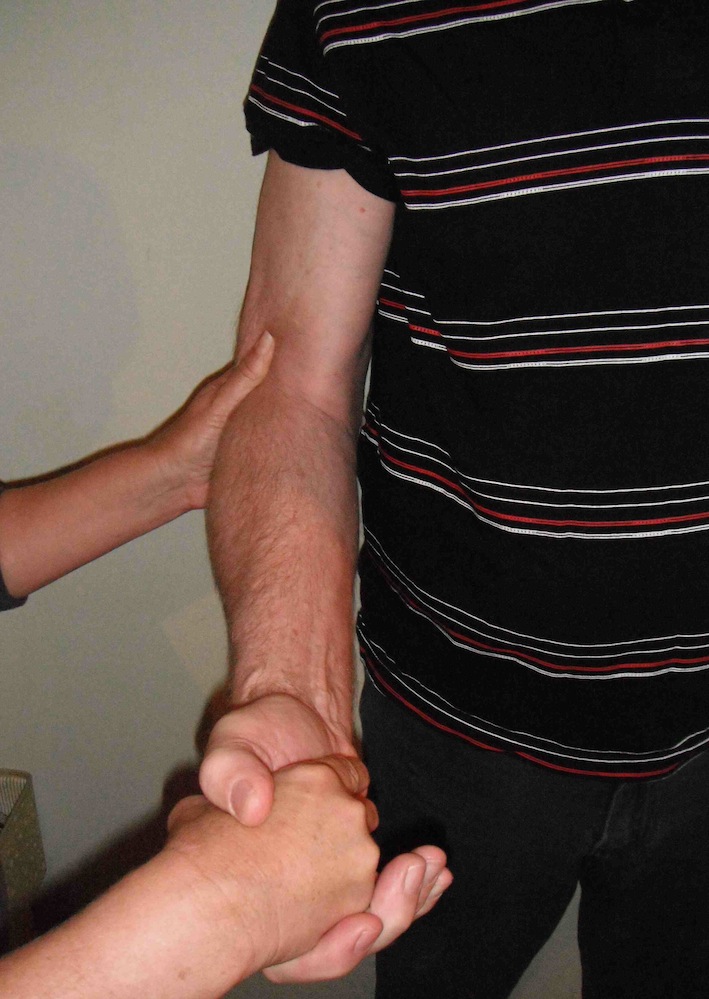
Compression-Rotation test / McMurray's Shoulder test
- test for SLAP lesion
- patient supine
- shoulder abducted 90°, elbow flexed 90°
- compression force to humerus
- humerus rotated
- attempt to trap torn labrum, positive if pain & click
O'Brien's
- SLAP lesion
- arm across body, in plane of scapula
- pain with stress abduction, thumb down
- nil pain with thumb up
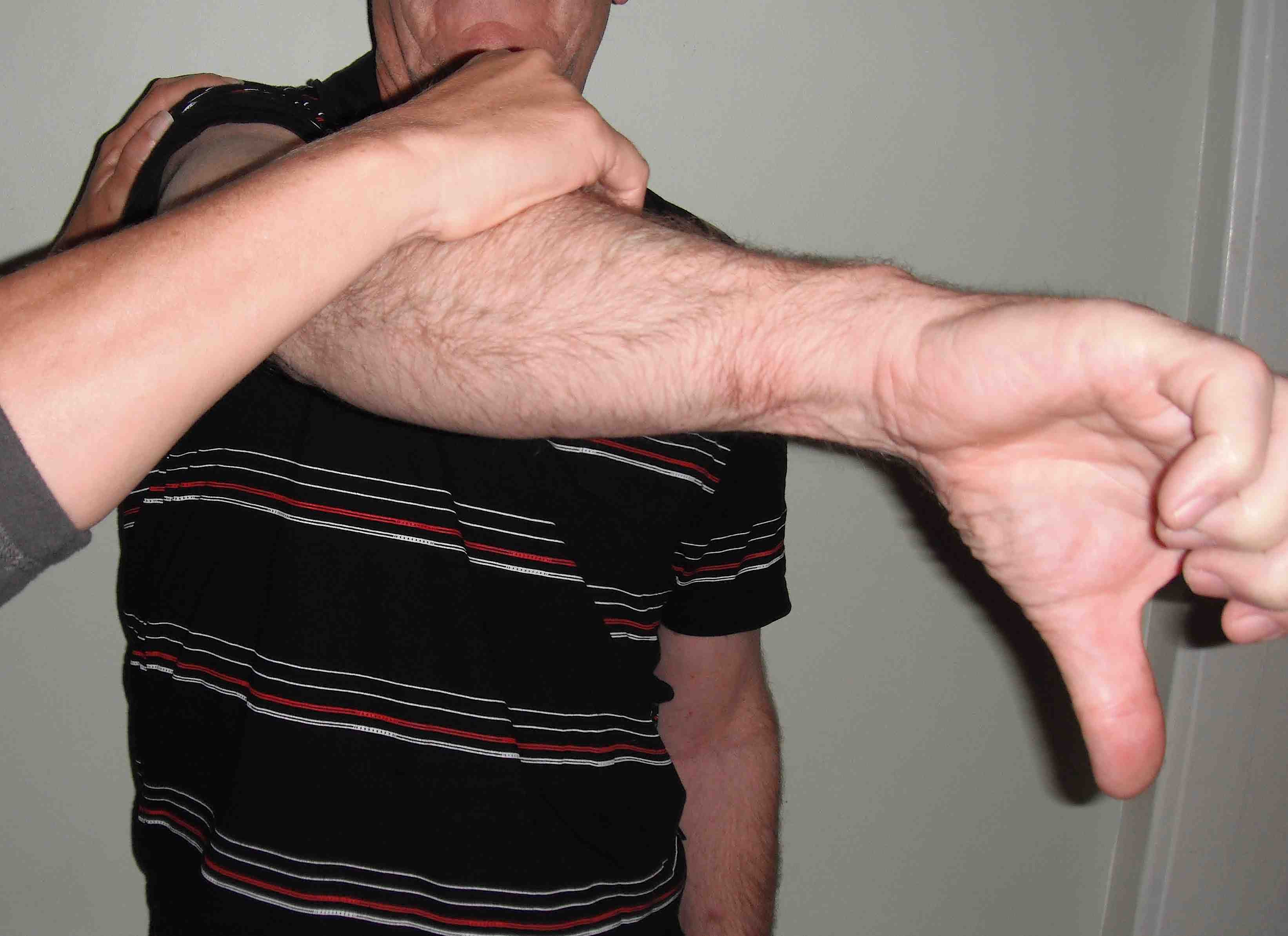
Instability
Sulcus sign
- needs to be compared to the opposite side
- patient
- in front of patient
- hands in lap
- pull down on both elbows
- look for sulcus
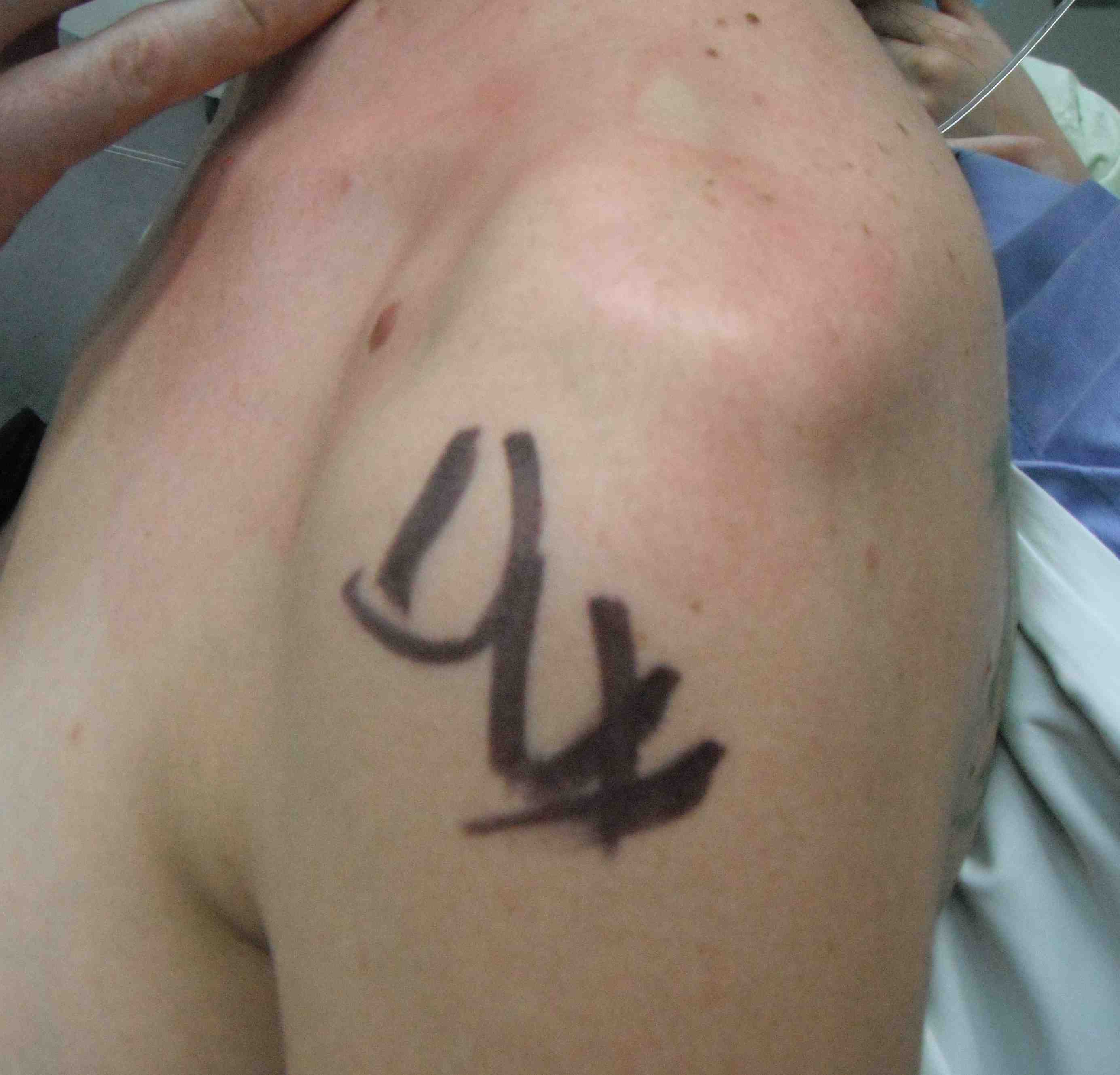
Anterior / Posterior Drawer
- sit next to patient
- stabilise shoulder girdle with 1 hand
- thumb on spine of scapula
- forefinger on coracoid
- centralize humerus
- must compare to normal side
- translate humeral head forward with other hand
- anterior & posterior translation noted
Anterior Apprehension Test
- patient lying
- shoulder abducted and elbow flexed 90°
- externally rotate shoulder
- positive test - look for apprehension
Jobe Relocation Test
- patient supine
- arm abducted to 90°
- forced external rotation
- relocate by pushing humeral head posteriorly & superiorly
- usually described by putting hand on humeral shaft
Posterior Stress Test
- stabilise scapula
- place shoulder in 90° forward flexion & 90° IR & adducted
- apply posterior force
- patient experiences pain +/- apprehension
- unlike anterior test patient has positive test if pain only
- note should reproduce the patients symptoms
Load and Shift
- patient lying down
- their hand under examiners armpit
- grasp neck of humerus with both hands
- load humerus into glenoid axially
- examinate stability annterior and posterior
Ligamentous Laxity
Wynne-Davies Criteria
1. Thumb touching forearm on flexing wrist
2. Fingers parallel to forearm with wrist extension
3. Elbows extend past 180°
4. Knees extend past 180°
5. Foot dorsiflex past 45°
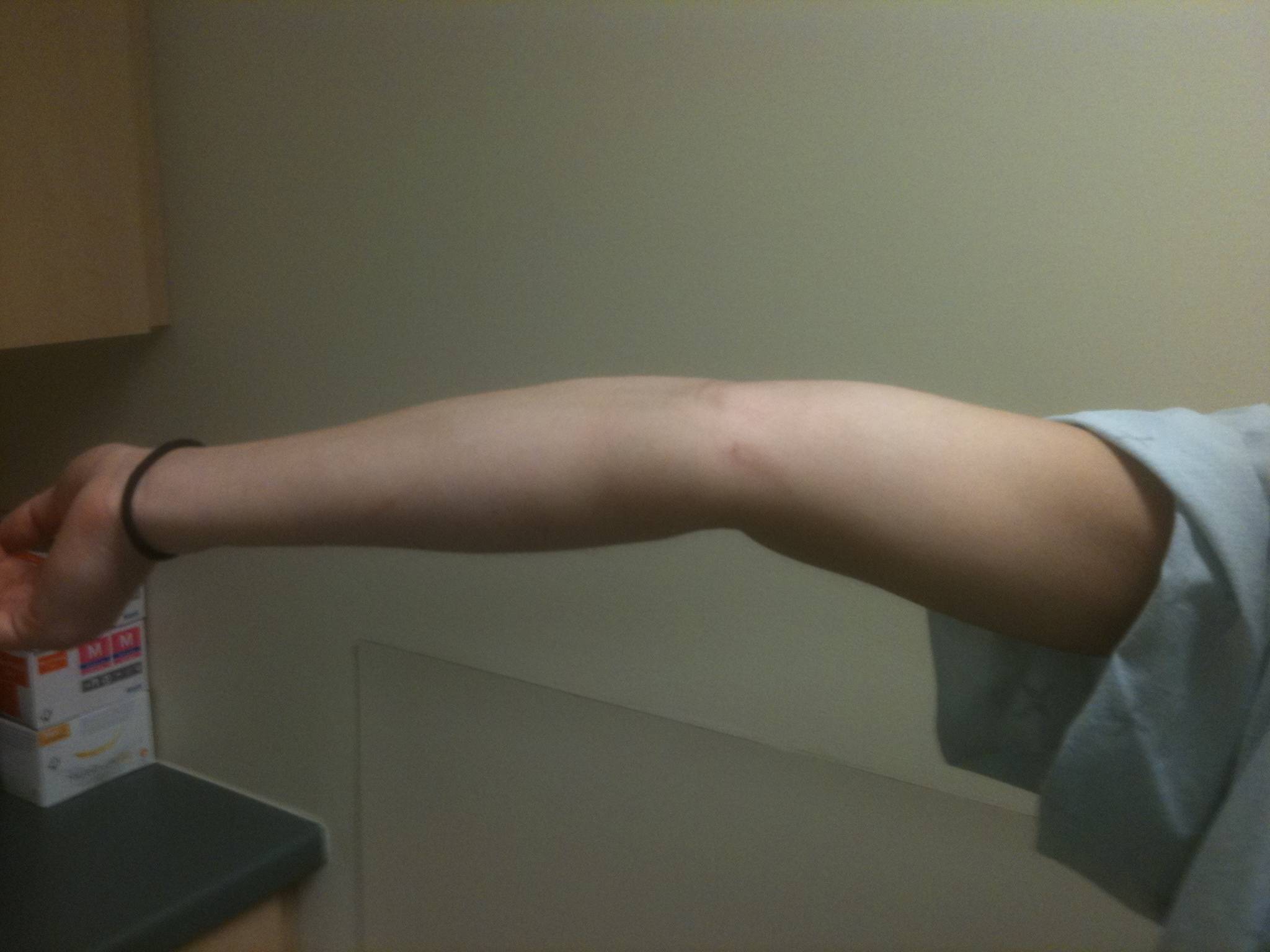
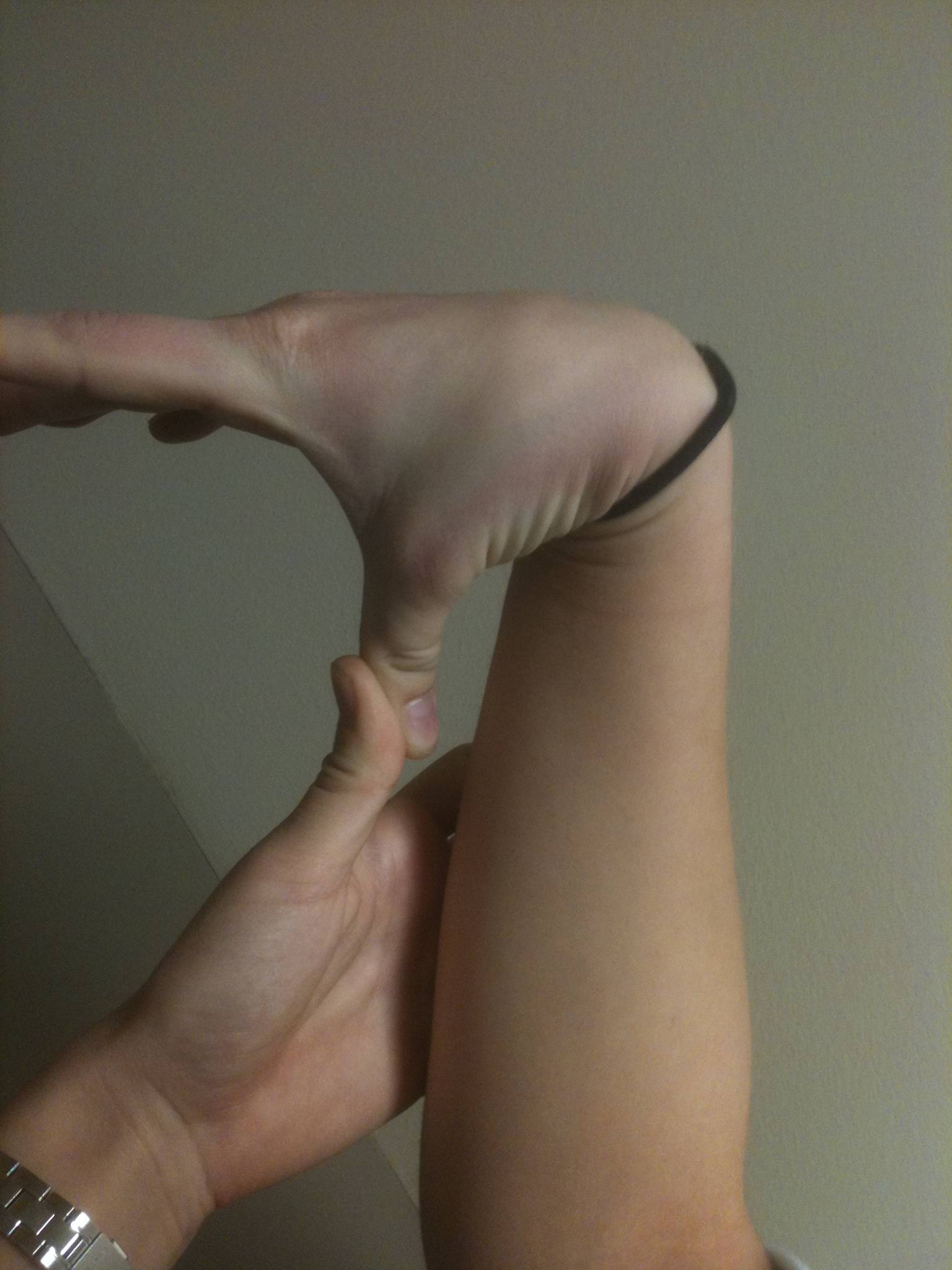
"If 3 of the 5 pairs of joints examined in any one individual showed this degree of laxity it is taken as positive."
Thoracic Outlet Tests
Adson Manoeuvre
- head toward side tested, neck extended
- palpate radial pulse of extended arm
- patient inhales deeply
- positive test if decrease or obliteration in pulse with concomitant reproduction of symptoms
Wright's Manoeuvre
- head turned away from tested arm, neck extended
- arm in 90° abduction & 90° extension
- palpate radial pulse
- patient inhales deeply
- positive test if decrease or obliteration in pulse with concomitant reproduction of symptoms
4C's
Cephalad Joint Neck
ROM
Compression Test
- slight extension
- compression
Spurling's test
- neck in lateral flexion, rotation
- stressed with compression
- positive if pain in ipsilateral extremity
Circulation
Radial pulse
Concealed
Axilla
Collagen
